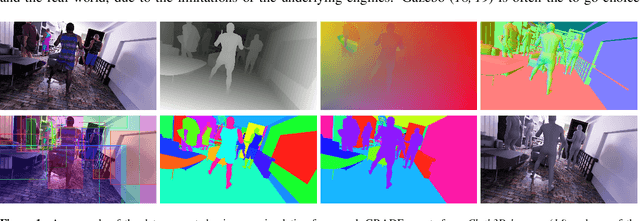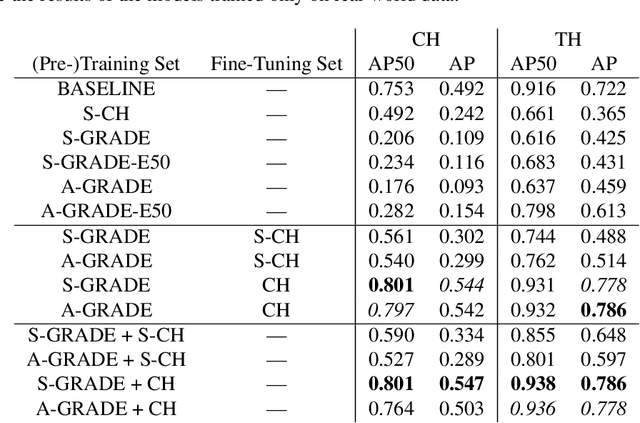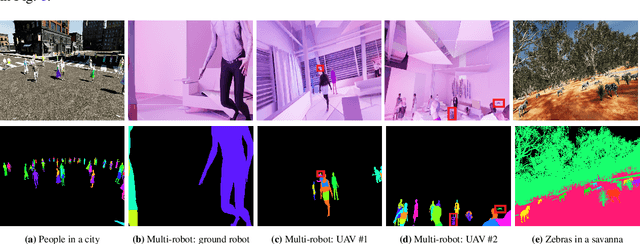Chenghao Xu
Deep Reinforcement Learning for Power Grid Multi-Stage Cascading Failure Mitigation
May 13, 2025Abstract:Cascading failures in power grids can lead to grid collapse, causing severe disruptions to social operations and economic activities. In certain cases, multi-stage cascading failures can occur. However, existing cascading-failure-mitigation strategies are usually single-stage-based, overlooking the complexity of the multi-stage scenario. This paper treats the multi-stage cascading failure problem as a reinforcement learning task and develops a simulation environment. The reinforcement learning agent is then trained via the deterministic policy gradient algorithm to achieve continuous actions. Finally, the effectiveness of the proposed approach is validated on the IEEE 14-bus and IEEE 118-bus systems.
ChatGarment: Garment Estimation, Generation and Editing via Large Language Models
Dec 23, 2024Abstract:We introduce ChatGarment, a novel approach that leverages large vision-language models (VLMs) to automate the estimation, generation, and editing of 3D garments from images or text descriptions. Unlike previous methods that struggle in real-world scenarios or lack interactive editing capabilities, ChatGarment can estimate sewing patterns from in-the-wild images or sketches, generate them from text descriptions, and edit garments based on user instructions, all within an interactive dialogue. These sewing patterns can then be draped into 3D garments, which are easily animatable and simulatable. This is achieved by finetuning a VLM to directly generate a JSON file that includes both textual descriptions of garment types and styles, as well as continuous numerical attributes. This JSON file is then used to create sewing patterns through a programming parametric model. To support this, we refine the existing programming model, GarmentCode, by expanding its garment type coverage and simplifying its structure for efficient VLM fine-tuning. Additionally, we construct a large-scale dataset of image-to-sewing-pattern and text-to-sewing-pattern pairs through an automated data pipeline. Extensive evaluations demonstrate ChatGarment's ability to accurately reconstruct, generate, and edit garments from multimodal inputs, highlighting its potential to revolutionize workflows in fashion and gaming applications. Code and data will be available at https://chatgarment.github.io/.
Exploiting Semantic Scene Reconstruction for Estimating Building Envelope Characteristics
Oct 29, 2024Abstract:Achieving the EU's climate neutrality goal requires retrofitting existing buildings to reduce energy use and emissions. A critical step in this process is the precise assessment of geometric building envelope characteristics to inform retrofitting decisions. Previous methods for estimating building characteristics, such as window-to-wall ratio, building footprint area, and the location of architectural elements, have primarily relied on applying deep-learning-based detection or segmentation techniques on 2D images. However, these approaches tend to focus on planar facade properties, limiting their accuracy and comprehensiveness when analyzing complete building envelopes in 3D. While neural scene representations have shown exceptional performance in indoor scene reconstruction, they remain under-explored for external building envelope analysis. This work addresses this gap by leveraging cutting-edge neural surface reconstruction techniques based on signed distance function (SDF) representations for 3D building analysis. We propose BuildNet3D, a novel framework to estimate geometric building characteristics from 2D image inputs. By integrating SDF-based representation with semantic modality, BuildNet3D recovers fine-grained 3D geometry and semantics of building envelopes, which are then used to automatically extract building characteristics. Our framework is evaluated on a range of complex building structures, demonstrating high accuracy and generalizability in estimating window-to-wall ratio and building footprint. The results underscore the effectiveness of BuildNet3D for practical applications in building analysis and retrofitting.
DynaPix SLAM: A Pixel-Based Dynamic SLAM Approach
Sep 18, 2023Abstract:In static environments, visual simultaneous localization and mapping (V-SLAM) methods achieve remarkable performance. However, moving objects severely affect core modules of such systems like state estimation and loop closure detection. To address this, dynamic SLAM approaches often use semantic information, geometric constraints, or optical flow to mask features associated with dynamic entities. These are limited by various factors such as a dependency on the quality of the underlying method, poor generalization to unknown or unexpected moving objects, and often produce noisy results, e.g. by masking static but movable objects or making use of predefined thresholds. In this paper, to address these trade-offs, we introduce a novel visual SLAM system, DynaPix, based on per-pixel motion probability values. Our approach consists of a new semantic-free probabilistic pixel-wise motion estimation module and an improved pose optimization process. Our per-pixel motion probability estimation combines a novel static background differencing method on both images and optical flows from splatted frames. DynaPix fully integrates those motion probabilities into both map point selection and weighted bundle adjustment within the tracking and optimization modules of ORB-SLAM2. We evaluate DynaPix against ORB-SLAM2 and DynaSLAM on both GRADE and TUM-RGBD datasets, obtaining lower errors and longer trajectory tracking times. We will release both source code and data upon acceptance of this work.
Learning from synthetic data generated with GRADE
May 07, 2023



Abstract:Recently, synthetic data generation and realistic rendering has advanced tasks like target tracking and human pose estimation. Simulations for most robotics applications are obtained in (semi)static environments, with specific sensors and low visual fidelity. To solve this, we present a fully customizable framework for generating realistic animated dynamic environments (GRADE) for robotics research, first introduced in [1]. GRADE supports full simulation control, ROS integration, realistic physics, while being in an engine that produces high visual fidelity images and ground truth data. We use GRADE to generate a dataset focused on indoor dynamic scenes with people and flying objects. Using this, we evaluate the performance of YOLO and Mask R-CNN on the tasks of segmenting and detecting people. Our results provide evidence that using data generated with GRADE can improve the model performance when used for a pre-training step. We also show that, even training using only synthetic data, can generalize well to real-world images in the same application domain such as the ones from the TUM-RGBD dataset. The code, results, trained models, and the generated data are provided as open-source at https://eliabntt.github.io/grade-rr.
* 5 pages, 5 tables, 2 figures. Accepted for the ICRA 2023 workshop Pretraining for Robotics (https://microsoft.github.io/robotics.pretraining.workshop.icra/). arXiv admin note: substantial text overlap with arXiv:2303.04466
Simulation of Dynamic Environments for SLAM
May 07, 2023



Abstract:Simulation engines are widely adopted in robotics. However, they lack either full simulation control, ROS integration, realistic physics, or photorealism. Recently, synthetic data generation and realistic rendering has advanced tasks like target tracking and human pose estimation. However, when focusing on vision applications, there is usually a lack of information like sensor measurements or time continuity. On the other hand, simulations for most robotics tasks are performed in (semi)static environments, with specific sensors and low visual fidelity. To solve this, we introduced in our previous work a fully customizable framework for generating realistic animated dynamic environments (GRADE) [1]. We use GRADE to generate an indoor dynamic environment dataset and then compare multiple SLAM algorithms on different sequences. By doing that, we show how current research over-relies on known benchmarks, failing to generalize. Our tests with refined YOLO and Mask R-CNN models provide further evidence that additional research in dynamic SLAM is necessary. The code, results, and generated data are provided as open-source at https://eliabntt.github.io/grade-rrSimulation of Dynamic Environments for SLAM
GRADE: Generating Realistic Animated Dynamic Environments for Robotics Research
Mar 08, 2023



Abstract:Simulation engines like Gazebo, Unity and Webots are widely adopted in robotics. However, they lack either full simulation control, ROS integration, realistic physics, or photorealism. Recently, synthetic data generation and realistic rendering advanced tasks like target tracking and human pose estimation. However, when focusing on vision applications, there is usually a lack of information like sensor measurements (e.g. IMU, LiDAR, joint state), or time continuity. On the other hand, simulations for most robotics applications are obtained in (semi)static environments, with specific sensor settings and low visual fidelity. In this work, we present a solution to these issues with a fully customizable framework for generating realistic animated dynamic environments (GRADE) for robotics research. The data produced can be post-processed, e.g. to add noise, and easily expanded with new information using the tools that we provide. To demonstrate GRADE, we use it to generate an indoor dynamic environment dataset and then compare different SLAM algorithms on the produced sequences. By doing that, we show how current research over-relies on well-known benchmarks and fails to generalize. Furthermore, our tests with YOLO and Mask R-CNN provide evidence that our data can improve training performance and generalize to real sequences. Finally, we show GRADE's flexibility by using it for indoor active SLAM, with diverse environment sources, and in a multi-robot scenario. In doing that, we employ different control, asset placement, and simulation techniques. The code, results, implementation details, and generated data are provided as open-source. The main project page is https://eliabntt.github.io/grade-rr while the accompanying video can be found at https://youtu.be/cmywCSD-9TU.
 Add to Chrome
Add to Chrome Add to Firefox
Add to Firefox Add to Edge
Add to Edge